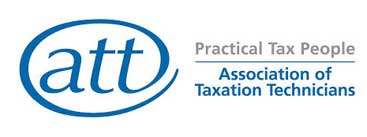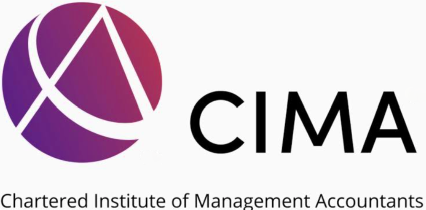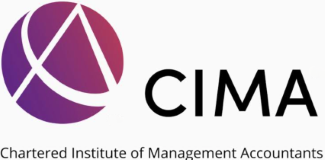Recent Update
Making Tax Digital for Income Tax (MTD for ITSA)
Government’s plans to make it easier for individuals and businesses to get their tax right. Self-employed businesses and landlords will need to follow the rules for MTD for Income Tax from their accounting period starting on 6 April 2026 which is delayed by a further two years. (it was due to apply from the 6 April 2024). It was announced onn 19 December. It will introduce over few phases, the date dependent on the taxpayer’s income: From April 2026, self-employed individuals and landlords with an income of more than £50,000 will be require to follow MTD for ITSA. Those income of between £30,000 and up to £50,000 will be require to follow from April 2027. The Government will review the needs of smaller businesses and individuals those under the £30,000 before making any decision on the further mandation of MTD for ITSA. Its require Digital record keeping (Excel or Software) and the information required to submit quarterly update and end of period statement. The government has announced that if your total gross income from self-employment and property is over £20,000, you’ll need to use Making Tax Digital for Income Tax in the future. We’ll set out the timeline for this at a later date.
Recent changes
All the recent key changes : National insurance cut further by 2p in April – from 10% to 8%; High Income Child Benefit Charge threshold raised from £50,000 to £60,000. The charge is tapered so if you, or your partner, earn between £60,000 and £80,000; Introduction of British ISA, allowing extra £5,000 investments in UK; VAT registration threshold for businesses upped from £85,000 to £90,000; Reduction of higher capital gains tax rate on property from 28% to 24%. Class 2 National Insurance for self-employed will be abolished. Minimum wages will be increased to £12.21 per hours over 21 years old from april 2025 (£11.44 per hours 2024). Full expensing capital allowance for new plants and machinery for companies. R&D and RDEC relief will be combined from April 2024. From 6 April 2025, the current remittance basis regime will be replaced with a new residence-based test. Foreign Income and Gains rules (FIG regime) for individuals will be taxed on their worldwide income and gains in accordance with the normal tax rules for UK residents. Reduction in the Dividend Allowance to £500 from April 2024. Reduction of CGT annual exemtion to £3,000 from April 2024. Increases the Employment Allowance to £10,500 from April 2025 and £100k cap withdrawn. No changes PA, income tax and VAT rate. Corporation tax rate for small profit 19% (profit up to 50k) it will be trapper- profit 0ver £250K tax @25% and from 2023 CT rate @25%. SME R&D relief is capped £20,000 plus 3 X PAYE & NIC.
VAT Reverse Charge for Construction Industry
VAT reverse charges for building and construction services has been delayed to 1 March 2021 (it was due to apply from the 1st October 2020), in order to tackle fraud in the construction industry. The reverse charge will apply individuals or businesses registered for VAT in the UK , this mean the customer receiving the service will now liable to account for VAT and have to pay the VAT due to HMRC instead of paying the supplier. The VAT cash amount will no longer flow between businesses and will have to be registered and need to mention on the invoice as a reverse charge apply. For more information about the VAT reverse charge, click here
Capital Gains Tax: Change in PPR and lettings relief
From the 6th April 2020, for the calculation of PPR the final 18 month exemption will be reduce to 9 months. Also deemed occupation at start of ownership to be limited to 24 months. Married couples/civil partners can only have one principal private residence (PPR ) Relief on one property. From April 2020 you can transfer only the principal private residence history to your spouse, not any other property.
This mean, it will increase the capital gain tax liabilities for anyone selling their main resident where apply PPR. Lettings Relief would be removed from 6 April 2020 onward. The proposed changes to lettings relief will potentially only be available to landlords who shared occupation of their main house with a tenant. Lettings relief can reduce capital gains tax due on the sale of a property as you can claim up to £40,000 individually or up to £80,000 if a partner or spouse jointly owns the property.
Capital Gains Tax: 60-Day Window for CGT return and payment
From 6 April 2020, anyone making a taxable gain from selling a UK residential property must submit a residential property capital gains return within the 30-day window from the date of completion and pay any CGT owed. From 27 October 2021, this deadline inrease for reporting capital gains tax on residential property disposals from 30 days to 60 days.
From April 2019 non-UK residents will be subject to UK tax on gains arising from direct or indirect disposals of all types of UK land and interests in UK property. But only gains in respect of appreciation in value after 6 April 2019 are subject to UK tax, there will be require a rebasing for tax purposes in the UK land on 5 April 2019. For the non-UK resident persons NRCGT apply since from 6 April 2015 any disposal of residential property in the UK. There will be require a rebasing of residential property on 5 April 2015.
UK property held by non-UK residents company
Changes from 6 April 2019, UK property gains released by non-UK resident companies are subject to corporation tax instead of CGT. Non-resident companies are no longer be required to complete NRCGT returns, as they are not required under Corporation Tax. The ATED-related capital gains tax is abolished. The normal Corporation Tax filing and quarterly payment rules apply. A Corporation Tax return will be required for that shortened accounting period. This mean, the disposal of a UK property will result in a one-day accounting period, as result a single stand-alone company will be considered very large for the corporation tax payment and CT will be payable 3 months and 14 days after the end of the one-day accounting period. However, by concession where there are 4 or more disposals, HMRC accept a 12 month accounting period.
Changes from 6 April 2020, Non-UK resident companies that carry on a UK property rental business or have other UK property income will be liable to corporation tax instead of income tax. For more information, click here
Capital Allowance
The 100% Enhanced Capital Allowances (ECAs) and first year tax credit for loss making companies for purchases of energy or water-saving plant and machinery will be abolished from April 2020. Annual Investment Allowance (AIA) increase to £1 million, this time limit is 1 January 2019 – 1 January 2022 ( suppose to end 31 December 2020). The main pool capital allowance rate remains at 18% writing down allowance per year and capital allowance special rate allowance reduced from 8% to 6% per year from April 2019.
The structures and buildings allowance (SBA) is a new relief available on the construction of non-residential structures and buildings (land and dwellings will not be eligible for relief). The relief provides a flat rate 3% per year allowance based on the original building expenditure (previously 2%). The relief applies from when a building is first brought into use. There are no balancing allowances or balancing charges in relation to the SBA on a future disposal of the building.
Off-Payroll Working in the Private Sector
From April 2021 off-payroll working in the Private Sector in medium and large business (previously April 2020, it has been delayed by 12 month). Similarly to off-payroll in the public sector which start from 6 April 2017, any medium or large private sector businesses hiring contractors or freelancers will be responsible for determining the IR35 status of their workers. The ‘fee-payer’ (the client or agency) will be responsible for National Insurance and PAYE deducted at source from their income before paying the contractor their net salary.
Digital Services Tax (DST)
From 1 April 2020, a proposal for a completely new tax of 2% on the revenues of search engines, social media platforms and online marketplaces which derive value from UK users. The DST is a departure from most corporate taxes as it applies to revenues not profits. It would only apply where the annual revenues of the group exceeded £500m and more than £25m of that was in the UK. Only revenues earned from 1 April 2020 would be taxed and HM Treasury would have to review the operation of DST by 31 December 2025. The DST does not seek to tax digital sales more generally.
Corporation Tax loss relief: Restriction and Relaxation
Legislation will be introduced in Finance Bill 2019. From 1 April 2020, the loss restriction will have the effect that the amount of chargeable gains that can be relieved with carried-forward losses will be restricted to 50%.
From 1 April 2017, a restriction on the amount of brought forward losses which can be offset in any one year. The restriction should only impact the largest companies and groups, an annual deduction allowance enables up to £5m of profits per company or group to be offset by brought forward losses each year before any restriction. Beyond this, profits can only be relieved by up to 50% using brought forward losses. A requirement to specify the amount of the deduction allowance in the corporation tax return. Further requirements for groups to nominate a company to prepare and file a group allowance allocation statement.
From 1 April 2017, a relaxation allowing carried forward losses to be used more flexibly. Trade losses and Non-trading loan relationship deficits (NTLRDs) can be carried forward against total profits of the company, and not just profits of the same trade.
Making Tax Digital for VAT
From 1 April 2019, VAT registered traders with turnover in excess of the VAT registration limit (currently £90,000), will have to keep digital record and need to submit their VAT returns using Making Tax Digital compatible software which linked to HMRC’s Making Tax Digital (MTD) systems.
FRS102 and FRS105
FRS 102: The Financial Reporting Standard applicable in the UK and Republic of Ireland. FRS 102 is available for use by UK unlisted groups and listed or unlisted individual entities preparing financial statements that are intended to give a true and fair view. FRS 102 is designed to apply to the general purpose financial statements and financial reporting of entities including those that are not constituted as companies and those that are not profit-oriented. This FRS 102 is a single financial reporting standard replacing old UK GAAP. It is a fair value accounting which to give a true and fair view of the assets, liabilities, financial position and profit or loss of the entity for the reporting period.
FRS 102 issued 14 March 2013 and effective for periods beginning on or after 1 January 2015. After that some amendments and revised to FRS 102, most recent published is March 2018. most recent amendments May 2019 and December 2019 its effective from 1 January 2020.
The standard comprises 35 sections, each of which addresses a specific area of accounting, including details of fare value accounting, recognition, measurement, terminology, presentation, format, accounting policy and disclosures.
FRS 102-1A: This Section 1A for small entities which meets the size criteria for a small-entity if it does not exceed at least two of the following three thresholds in relation to a financial year: From 6 April 2025 Turnover: £15 million (before £10.2m) adjusted for periods longer or shorter than 12 months. Balance sheet: £7.5 Million (before £5.1m), and Average number of employees: 50 or less. FRS102-1A reduce disclosure is effective for accounting periods beginning on or after 1 January 2016. Small entities must apply the recognition and measurement requirements of FRS102 in full but are subject to different presentation and disclosure requirements (usually 13 disclosure). However, the financial statements of a small entity must also include any extra disclosures if material and necessary for them to give a true and fair view of the assets, liabilities, financial position and profit or loss of the entity for the reporting period. Currently, its not require to submit profit & loss, OCI, SOCIE , Cash flow and director report to company house. But Company House submission requiremets is changing. Under this new framework, all small companies, including micro-entities, will be required to file their profit and loss accounts. Having key information such as turnover and profit or loss available on the public register will help creditors and consumers make better-informed decisions. It will also improve the value of the information on the register for users. For more information about the FRS 102, click here.
FRS 105: FRS 105 The Financial Reporting Standard applicable to the Micro-entities Regime is a new accounting standard applicable to the smallest entities. It published 16 July 2015. effective for accounting periods beginning on or after 1 January 2016. An entity meets the size criteria for a micro-entity if it does not exceed at least two of the following three thresholds in relation to a financial year: From 6 April 2025, Turnover: £1 Million or less (adjusted for periods longer or shorter than 12 months) Balance sheet: £500,000 or less, and Average number of employees: 10 or less. After the first financial year of the entity, the criteria must be met in two consecutive years for an entity to qualify as a micro-entity and must be exceeded in two consecutive years to cease to qualify.
FRS 105 is a single accounting standard which based on FRS 102. The standard comprises 28 sections, each of which addresses a specific area of accounting, including details of recognition, measurement, terminology, presentation, format, accounting policy and disclosures. FRS 105 not require to revaluing or subsequently measuring assets or liabilities at fair value, apply historical cost, one line current assets and current liability on balance sheet, not require to submit profit & loss and director report to company house. Only disclosure require for any arrangements that are not reflected in its statement of financial position if it is material, average number of employee, advance & credit to director and financial commitment & guarantee as the foot note of Balance sheet. But Company House submission requiremets is changing. Under the new framework, all small companies, including micro-entities, will be required to file their profit and loss accounts. Having key information such as turnover and profit or loss available on the public register will help creditors and consumers make better-informed decisions. It will also improve the value of the information on the register for users. For more information about the FRS 105, click here.







